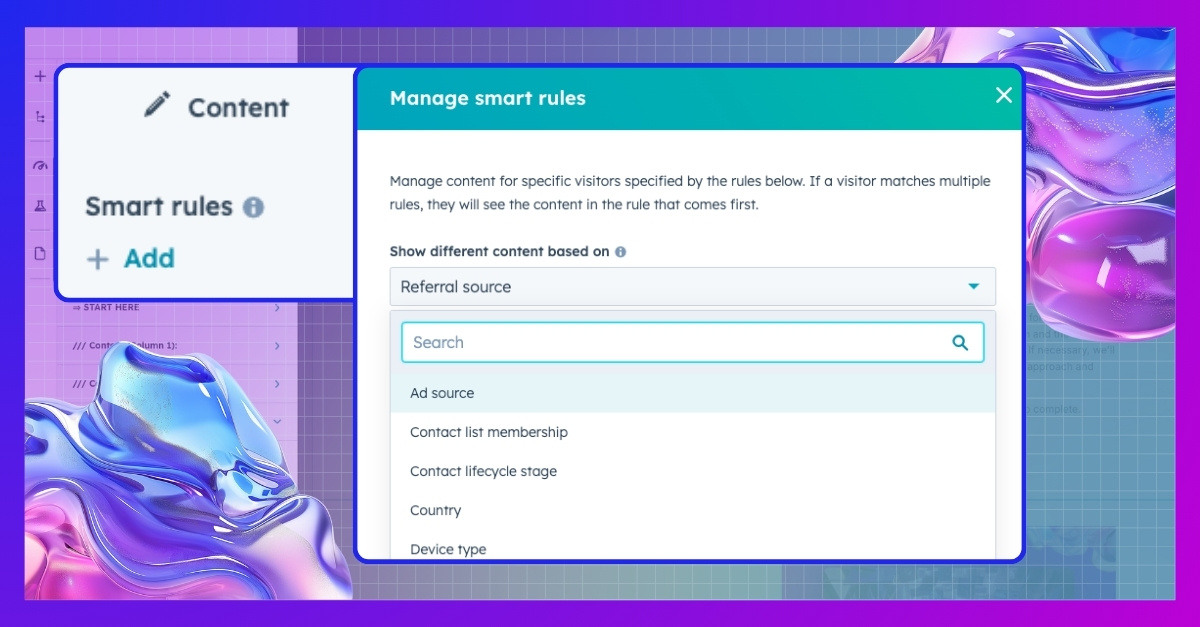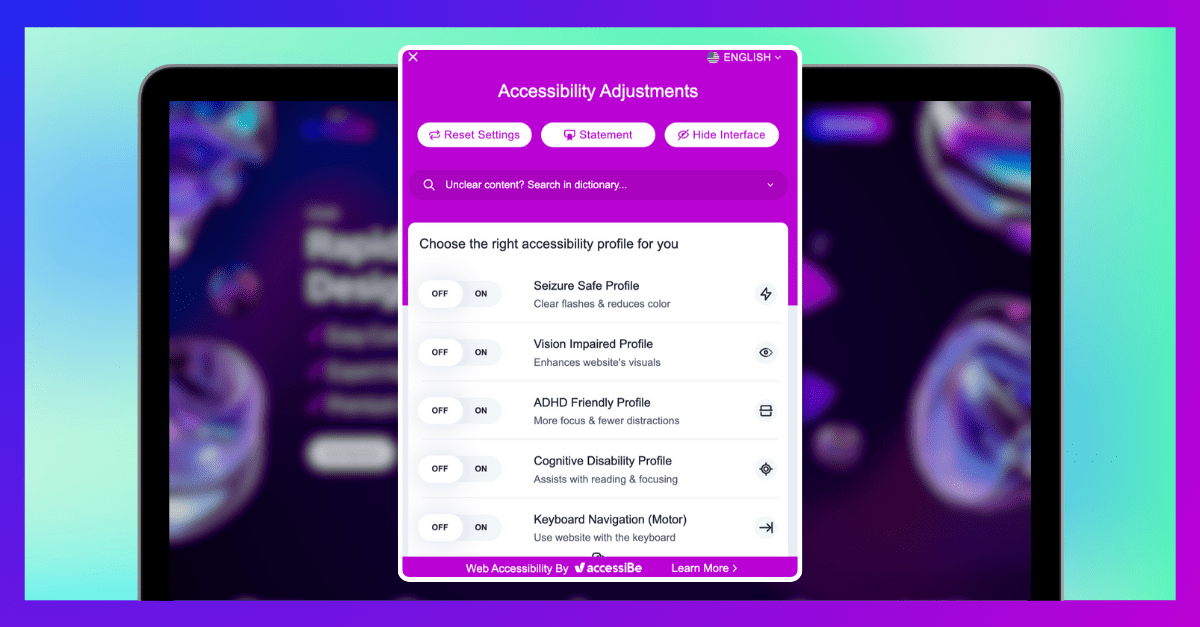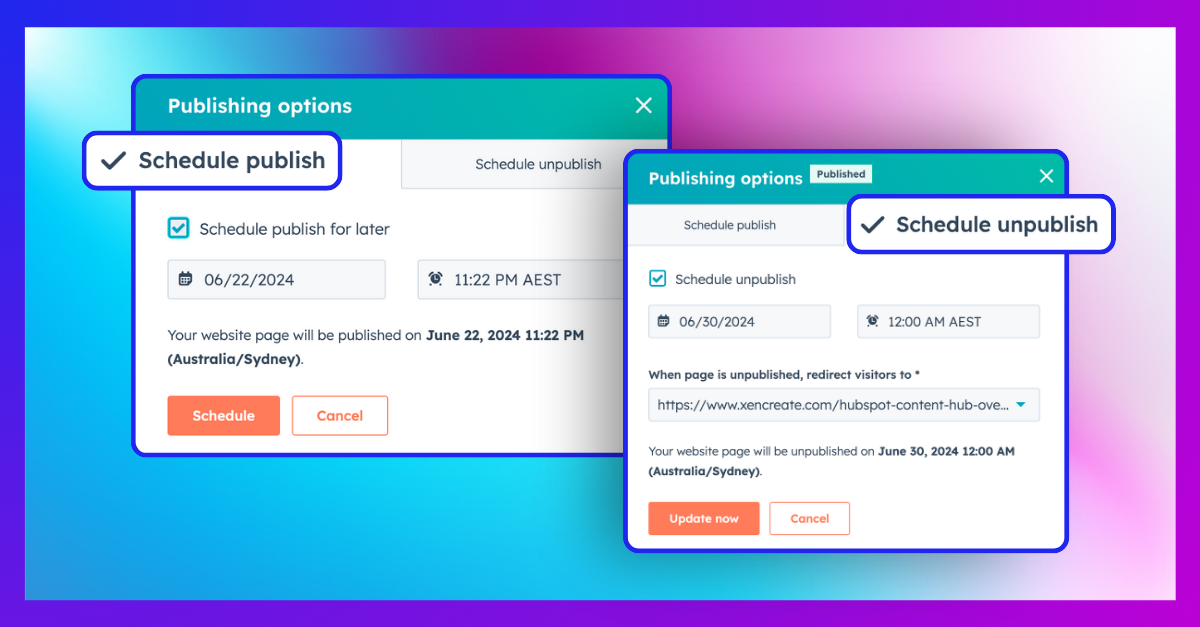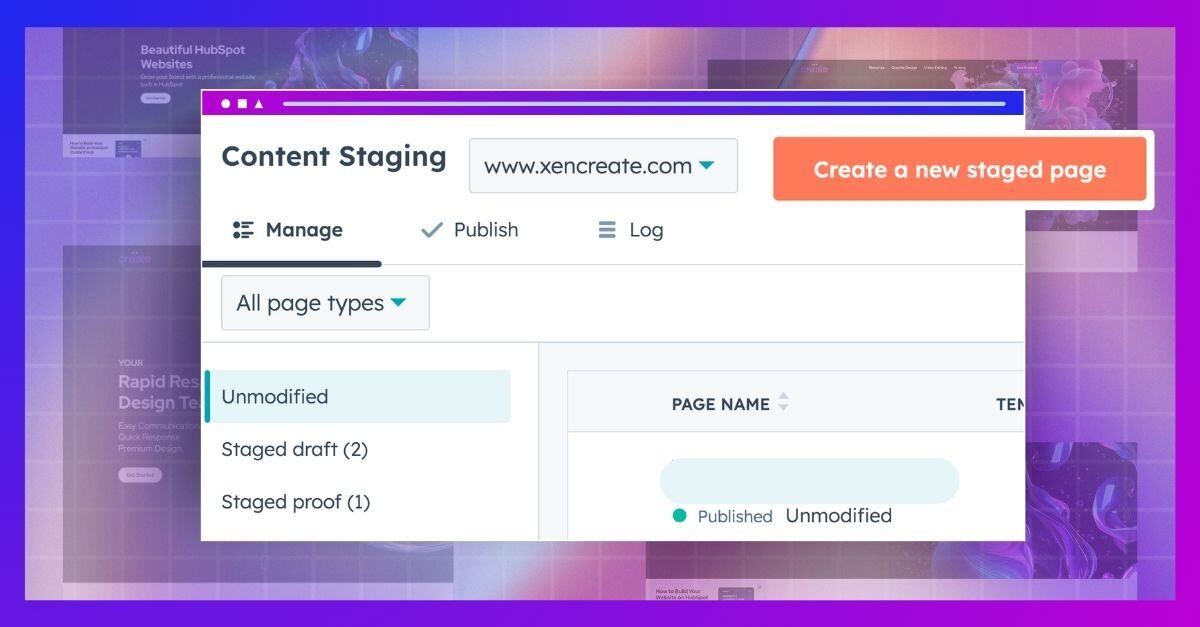
In today’s digital landscape, where meaningful customer connections matter more than ever, personalising your communication is important. Smart content can help by allowing you to set rules that tailor how your content is presented to different users, making your message more relevant and engaging for your audience.
For example, you can customise content like subject lines, body-text modules, blog content, page content and global modules based on location, devices, gender, and age. This personalisation helps your message resonate more effectively with your audience.
In this blog, we'll discuss:
- What type of smart content can you use on HubSpot?
- How to use smart content on your HubSpot website?
- What are the limitations and things to consider when using smart content?
What type of smart content can you use on HubSpot?
Here are the different smart content categories you can use to make your content more personalised:
-
Ad Source: Show specific content to people based on the ad they clicked on. For instance, if someone clicks an ad promoting a summer sale, you can direct them to a page highlighting summer products. The ad source is identified by special codes in the URL called UTM parameters.
-
Contact List Membership: Display different content to visitors on a specific email list. For instance, members of your VIP list might see exclusive offers not available to others. This is evaluated using cookies.
-
Contact Lifecycle Stage: Similar to contact list membership, cookies are used to determine the lifecycle stage of visitors. Based on this, you can show content that aligns with where they are in their customer journey. For example, new visitors might see introductory information, while returning customers might see more advanced content.
-
Country: Content displayed is based on your viewer’s country. For example, if someone is browsing from the UK, you can show prices in pounds or highlight UK-specific promotions. This is determined by their IP address.
-
Device Type: Target visitors based on whether they’re using a mobile, tablet, or desktop. For instance, mobile users might see a more streamlined version of your website, while desktop users see a fuller experience. The tool guesses the device type by checking the visitor's browser details, but this isn't always foolproof as it can be manually changed.
-
Referral Source: Show content based on how visitors found your site. For example, if they arrive via a social media post, you can greet them with a welcome message that ties into your social campaign.
-
Preferred Language: Personalise your content based on the language settings in the visitor’s browser. If someone’s browser is set to Spanish, you can automatically display your site in Spanish.
-
Query Parameter: Content is based on specific words or codes in the URL. For example, if a user’s URL contains “utm_source=Facebook,” you can show content specifically for your Facebook audience.
How to use smart content on your HubSpot website?
- Go to your HubSpot page editor.
- Select the module where you want to add your smart content.
- On the left side, under the Content tab, find Smart Rules and click + Add.

- A pop-up will appear on the right side where you can select the smart content category.

- After selecting the smart content category, add your smart rules and click Save.

- To make changes, select the drop-down arrow under Smart Rules to choose which rule you want to edit.

Note: Other than website/landing pages, you can also add smart content to marketing emails, blog posts, and design managers.
What are the limitations and things to consider when using smart content?
Smart content comes with limitations. When adding smart rules to your content, you can only include one category per module, but you can add multiple smart rules within that category. For example, if you choose to add smart rules based on Country, you won’t be able to add rules from the Device Type category. You can add a maximum of 256 rules per module.
While smart content is powerful, its effectiveness depends on strategic use. One consideration is that Google has difficulty interpreting smart content, which can limit your page’s SEO benefits. Additionally, using smart content on Thank You pages isn't recommended. When a visitor submits a form and is redirected to a Thank You page, HubSpot doesn’t have enough time to evaluate whether they meet the smart content criteria. For this reason, it’s best to avoid smart rules on these pages.
While smart content can help target your message more precisely, excessive use can come across as intrusive. To get the most out of this tool, focus on applying it where it truly enhances your audience’s experience.
Conclusion
Smart content has the potential to transform how you connect with your audience by delivering personalised experiences that resonate. By using smart content categories like ad source, lifecycle stage, and device type, you can make your messaging more relevant and engaging. This approach not only enhances the user experience but also boosts the impact of your content.
Start testing smart content on your HubSpot pages today to see how it can improve engagement throughout your users' journey. To explore more ways to maximise your HubSpot portal, dive deeper into HubSpot Content Hub features with our comprehensive guide. Download our HubSpot Content Hub Overview Guide today!
You can also find this guide, along with our other invaluable resources, on our Resources page.

How to add an Accessibility tool to your HubSpot website
In today’s digital age, ensuring that everyone can easily access and interact with your online content is more important than ever. Accessibility...

Essential Publishing Controls in HubSpot Content Hub: Schedule Publish and Unpublish
One of the most useful features in HubSpot Content Hub is Schedule Publish. If you're not familiar with it, this feature allows you to schedule a...

Effortless Website Revamp: Discover HubSpot's Content Staging
If you need a website makeover without the risk of messing up your current live website, HubSpot has the perfect solution for you: Content Staging.



 XEN Create
XEN Create
